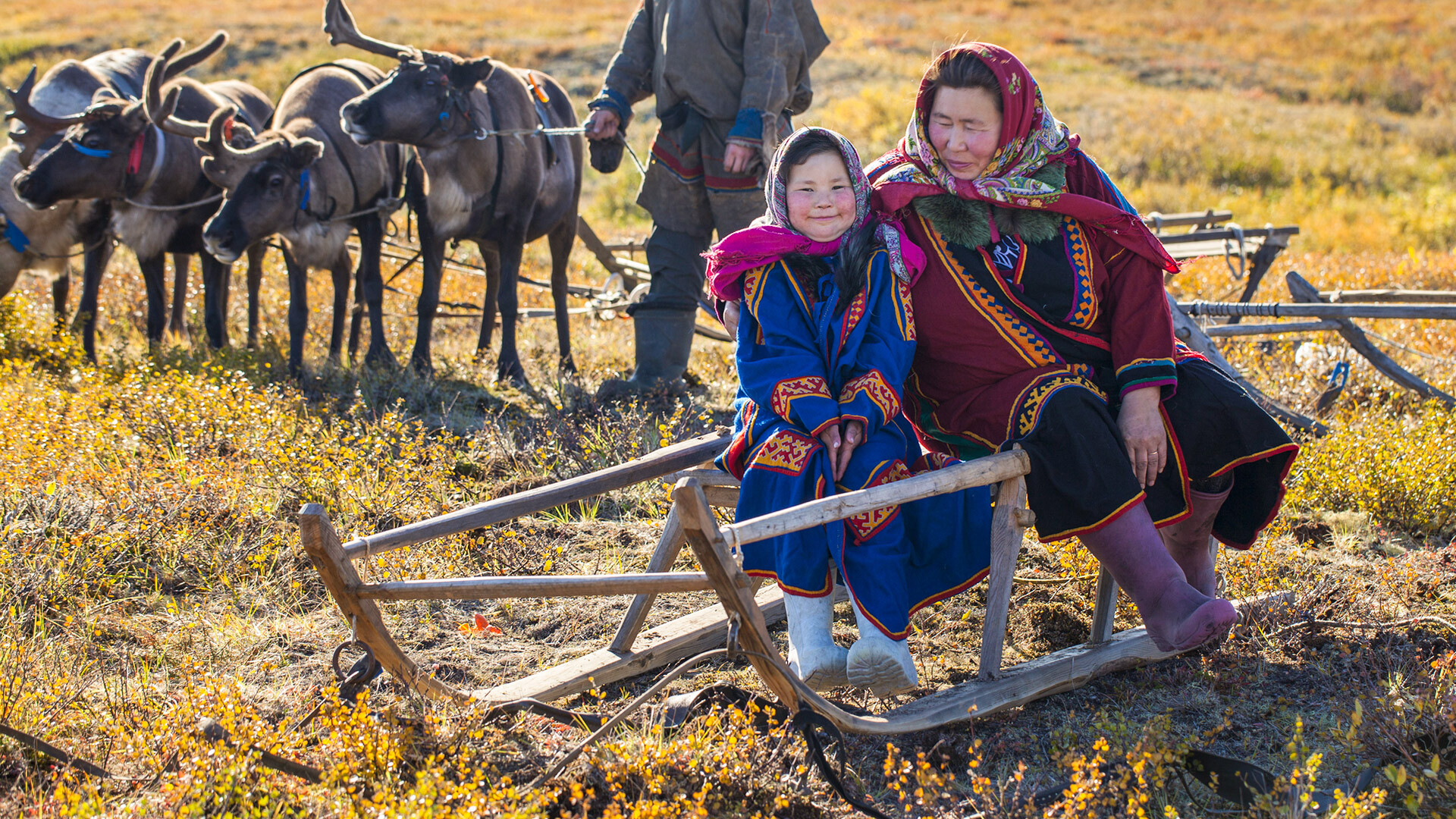
Yamal, the family of Nenets people in the tundra.
Legion Media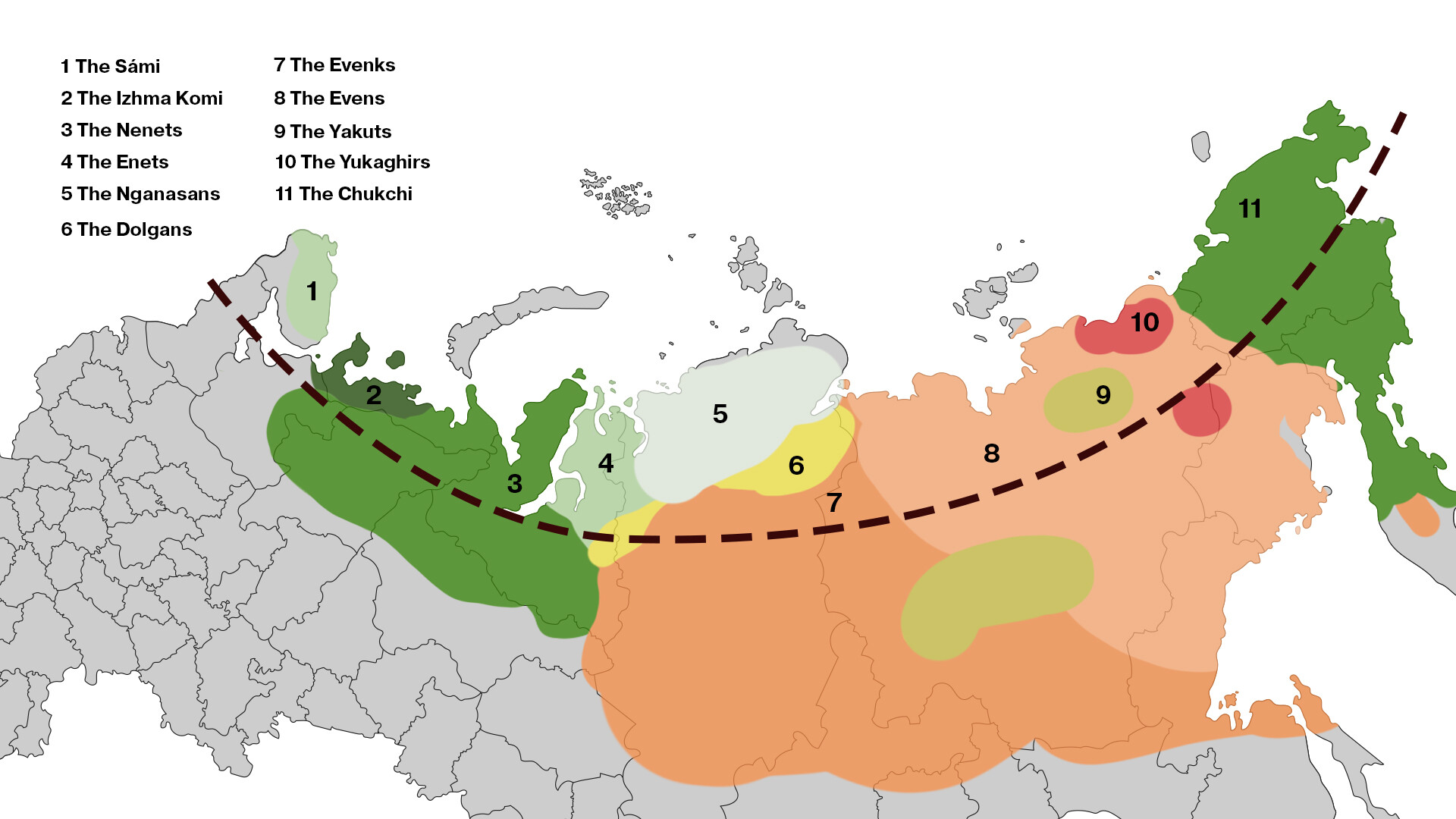
Here's where the indigenous peoples of the North live in Russia. Of course, not only them live in these regions.
Anton RomanovAbout 20 percent of Russia is located beyond the Arctic Circle and this area is the home for 2.3 million people - more than half of all Arctic-dwellers in the world. Most of them are Russians, but there are also 40 indigenous peoples of the North. Each has its own language, culture and traditions. Only a quarter of them are nomadic, with the rest preferring urban life these days: the largest Arctic cities are Murmansk (280,000 inhabitants), Norilsk (about 180,000), Vorkuta (over 50,000) and Salekhard (over 50,000).
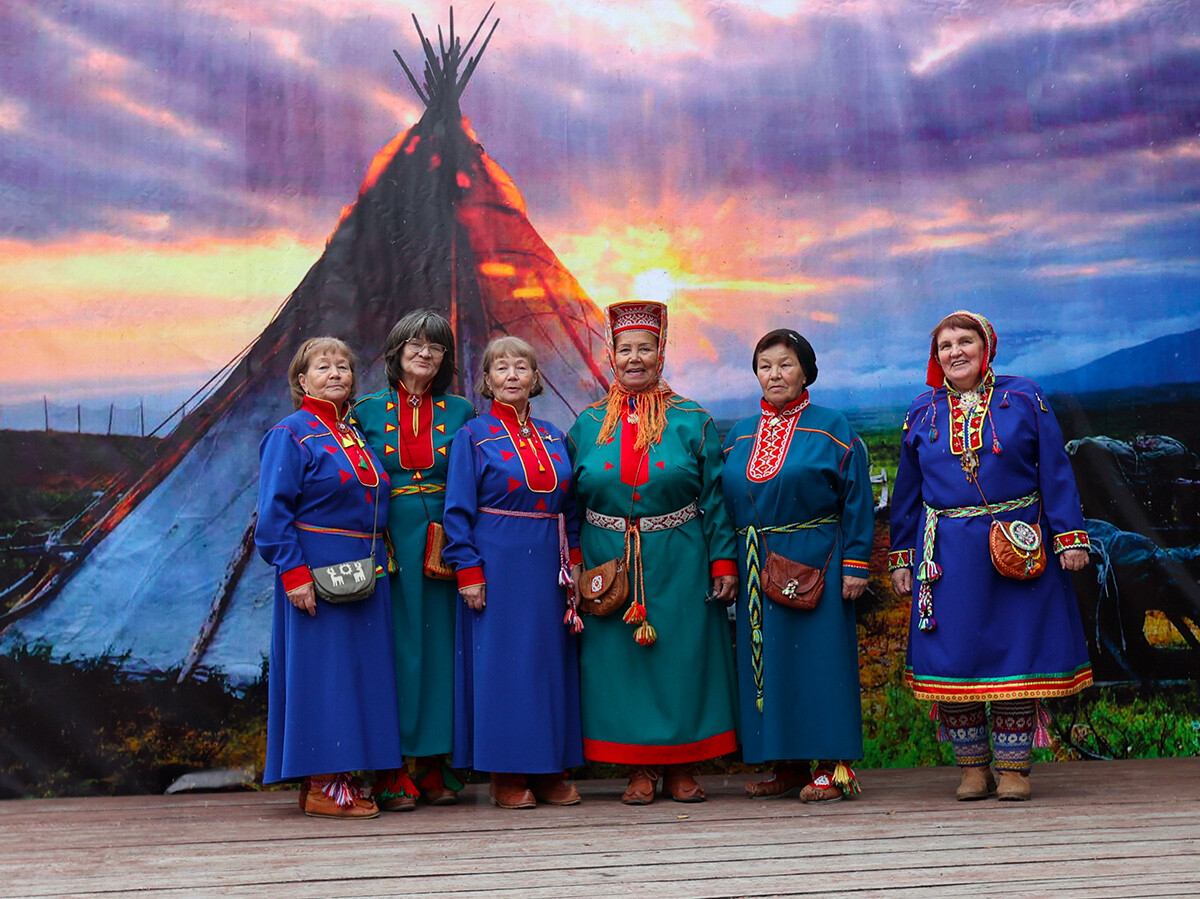
Participants in the Saami National Games perform folk songs in the Murmansk Region.
Pavel Lvov/SputnikAbout 2,000 Sámi (there are 80,000 of them in total, with the rest found in Finland, Norway and Sweden) live in the north of Murmansk Region . The region they reside in is called ‘Lapland’, which is located on the territory of these countries. The Sámi have never had their own state, but they have their own anthem and flag. They are the most ancient inhabitants of the Kola Peninsula and have lived there since before AD. Modern Sámi are engaged not only in traditional reindeer breeding and fishing, but also in the most common urban work. The center of Sámi culture is located in the village of Lovozero
(More about them.)
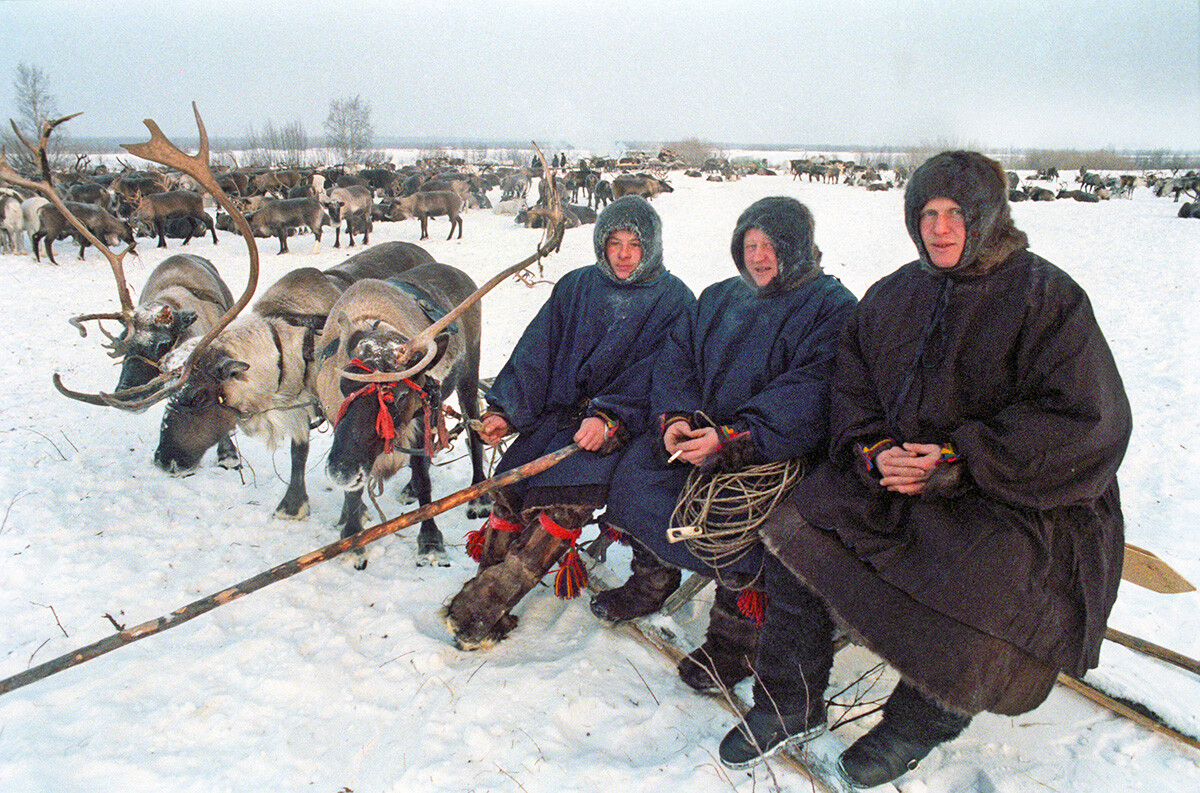
Guests at the Izhma Komi people.
S. Gubsky/TASSNext to the Sámi live the Izhma Komi people. There are 16,000 of them in total and most of them live in the Komi Republic’s Izhma District. However, more than a 1,000 of Izhma people live in the Lovozero area, to the north of Yamal and the Khanty-Mansi Autonomous Okrug. They are considered an ethnic group of the Komi. The Izhma have their own dialect of the Komi language. Also, unlike them, the Izhma are engaged in nomadic reindeer herding.
(Read more about the Komi people here.)
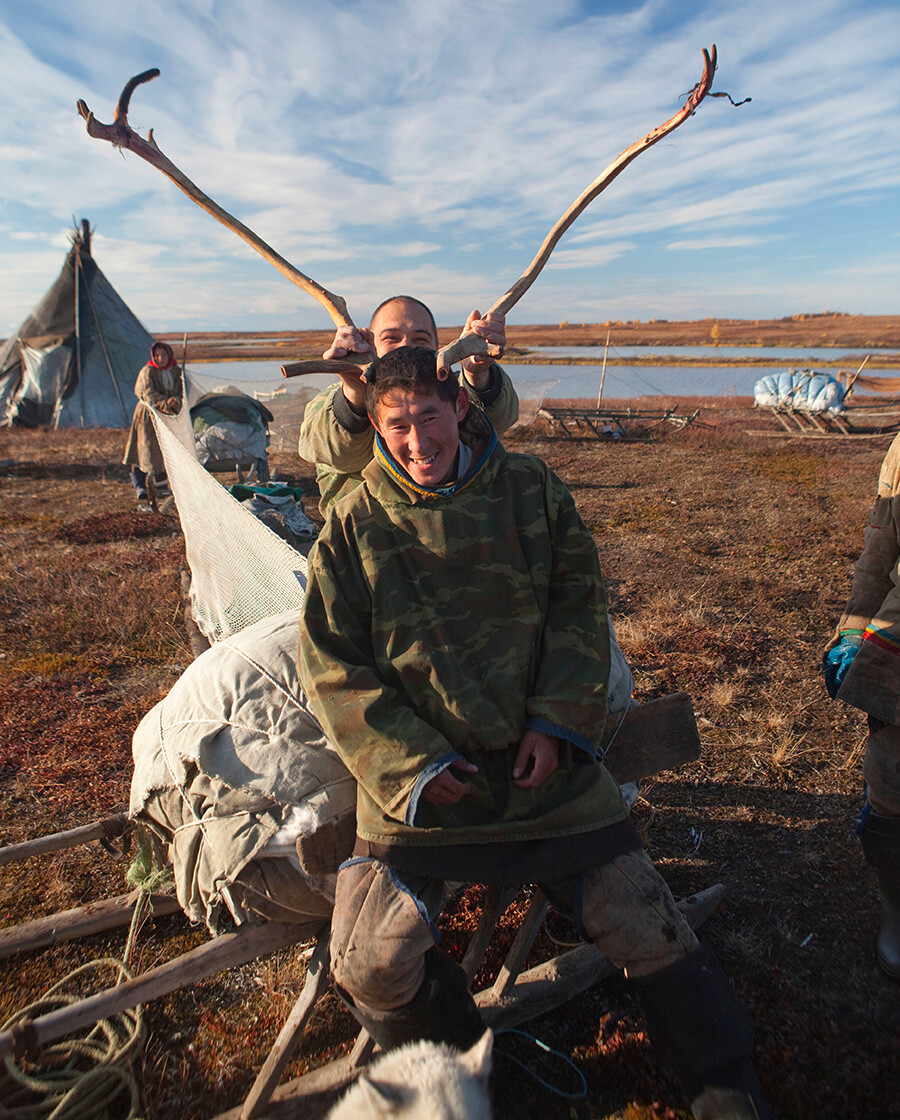
The main nomads of the Russian Arctic are the Nenets, who live primarily in Yamal. There are about 45,000 of them in total and 17,000-20,000 of them wander with reindeer. Many Nenets people speak fluent Nenets (especially in the tundra) and Russian. The modern reindeer breeders, despite still often living in traditional tents, like their ancestors, use all the benefits of civilization and even run blogs on social networks about their nomadic life.
(Meet one of them here.)
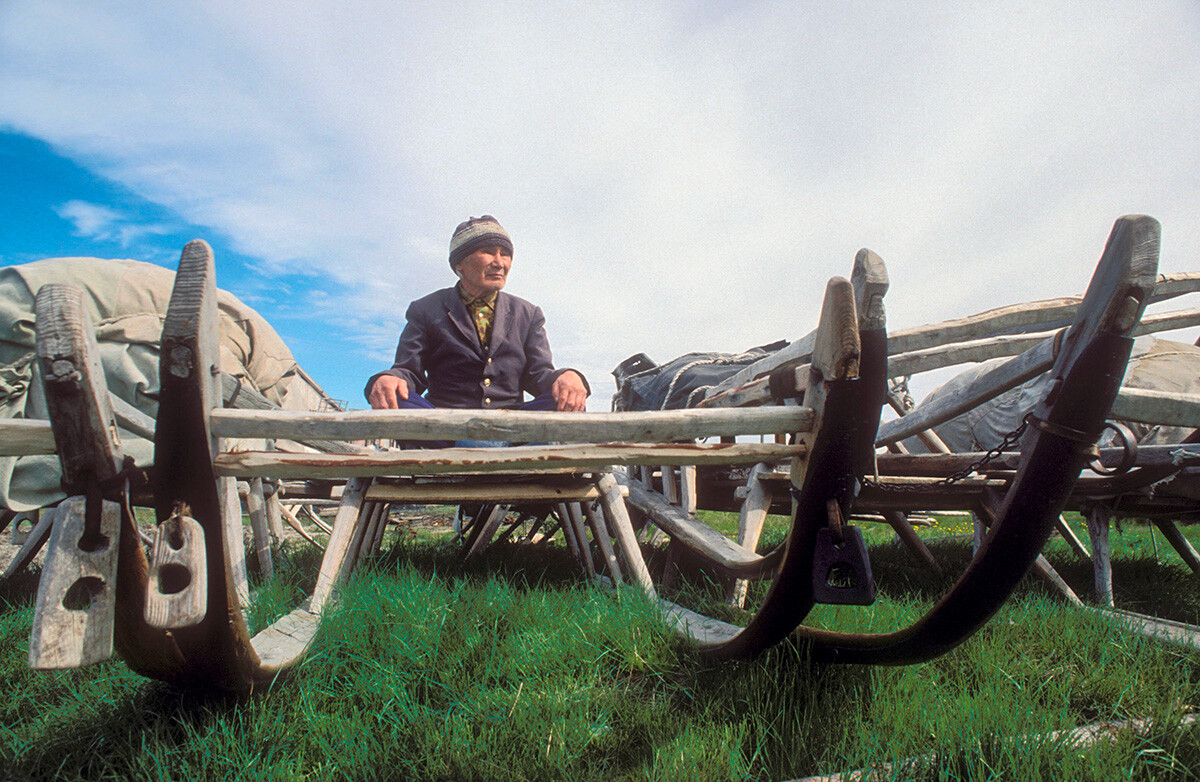
The village of Potapovo on the bank of the Yenisei River.
Vladimir Velengurin/TASSOne of the vanishing peoples of the world, with only 200 individuals left. Often, the Enets are called ‘Yenisei Samoyeds’. They live in the Taimyr Peninsula in small Arctic settlements near the Yenisei River and are engaged in hunting and fishing. There are several dozens of Enets native speakers among them. Their language is close to the languages of their neighbors - the Nenets and Nganasans.
(Read more about rare languages here).
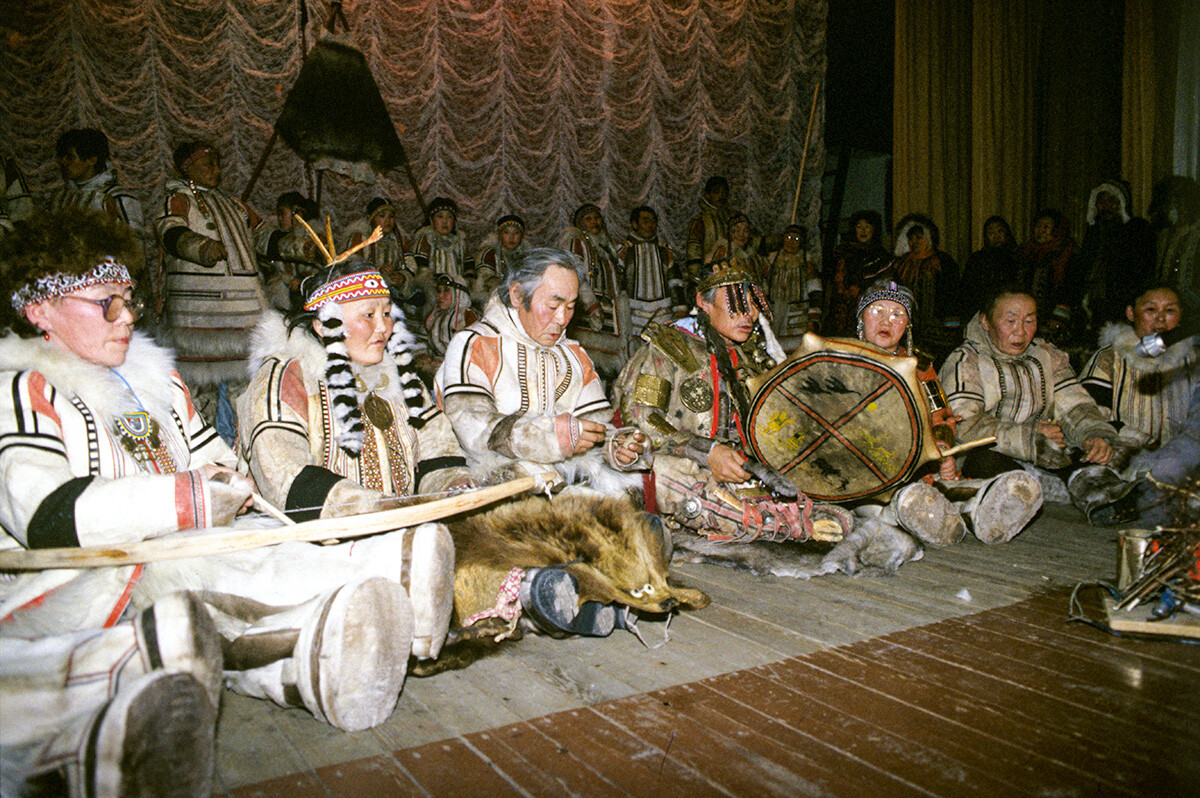
The northernmost people of Eurasia are the Nganasyns. There are less than 900 of them and they live in the northeast of the Taimyr Peninsula. The Nganasans adopted an urban lifestyle around the 1930s, with the settlements of Ust-Avam, Volochanka and others built for them. Their language is considered to be vanishing, now spoken by only 125 people. At the same time, Soviet scientists collected a rather large collection of Nganasan folklore, from proverbs to poems.
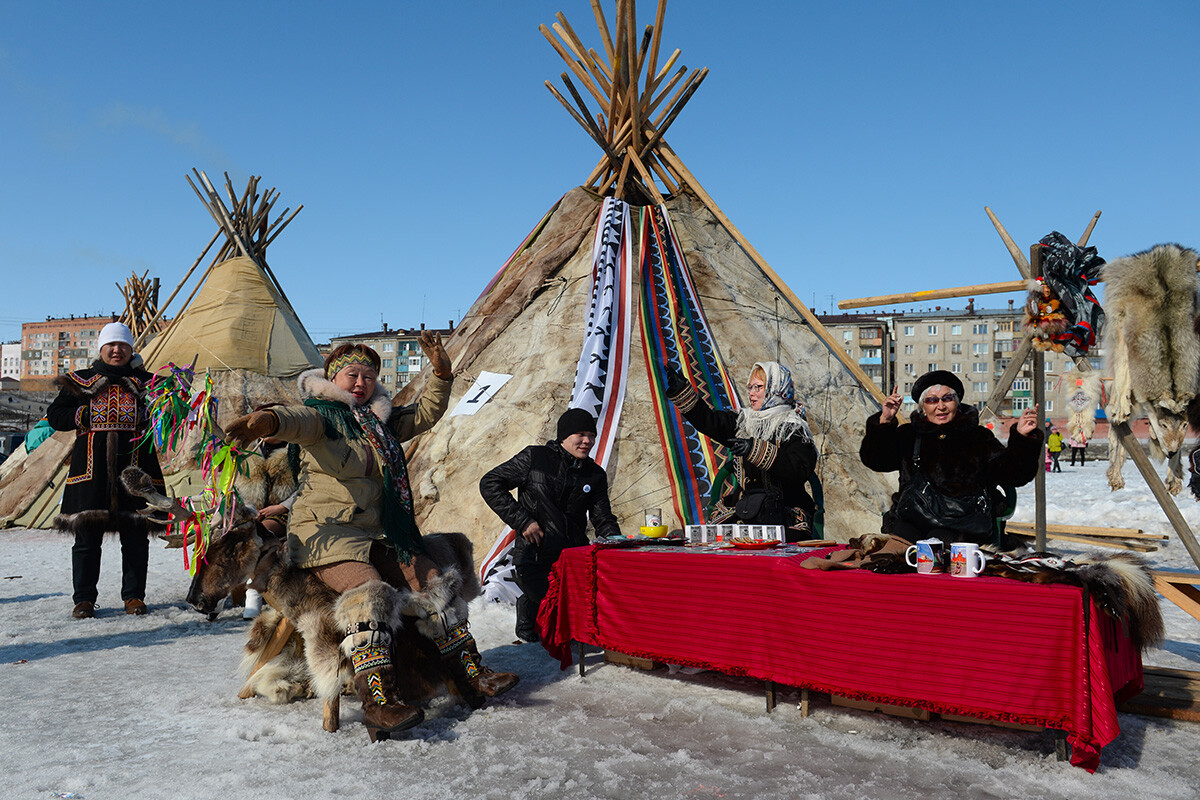
The town of Dudinka, Taymyr (the north of the Krasnoyarsk Territory).
Alexander Kryazhev/SputnikThe Dolgans are a Turkic people living in Taimyr and Yakutia (the northernmost Turkic ethnic group in the world). Their language, in fact, has a lot in common with the Yakut language, which is not surprising, since they have been neighbors for centuries. Only in the mid-20th century did the Dolgans begin to be considered a separate nation, rather than an ethnic group of the Yakuts. Unlike many other indigenous peoples of the Arctic, the number of Dolgans is small, but growing. Today, they number about 8,000 people, which is a thousand more than 20 years ago. They live in Arctic settlements and go fishing. There are also a few nomads among them.
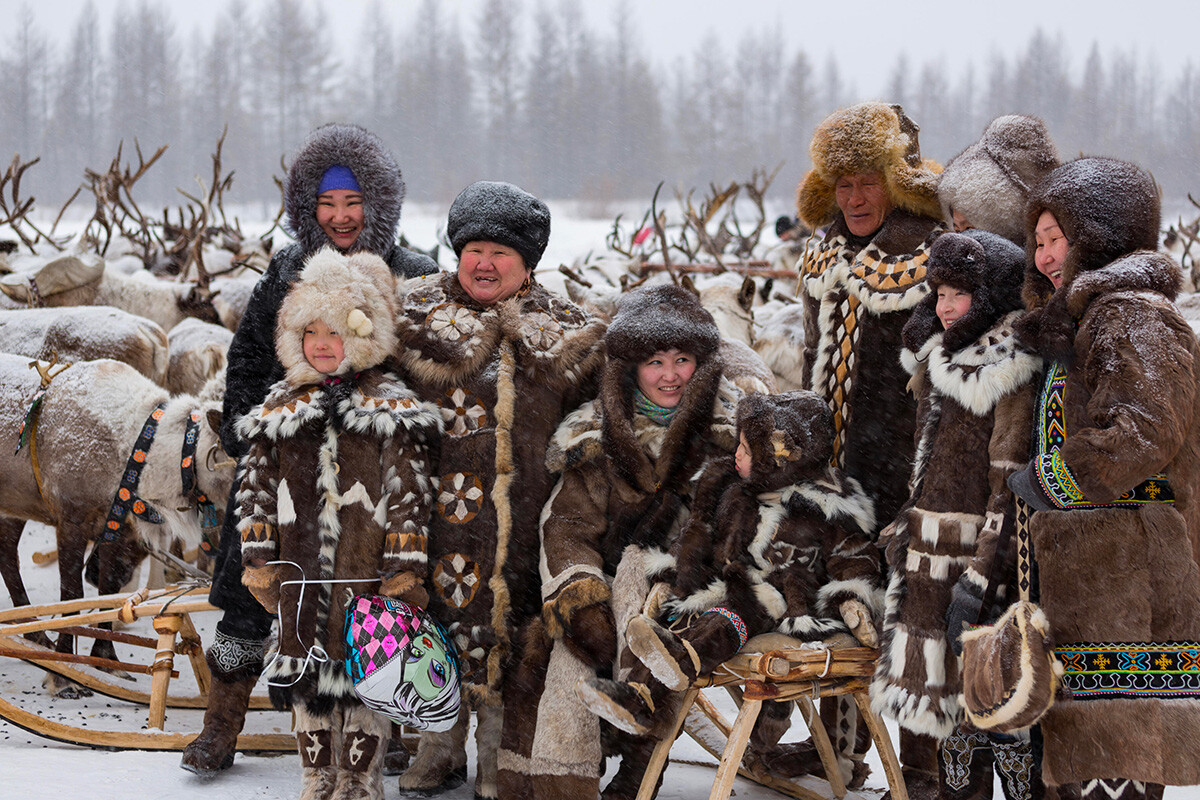
The Evenk people live in Eastern Siberia, from the Yenisei River to the Sea of Okhotsk. About 40,000 people live in Russia, with around the same number in China. Half are residents of Taimyr and Yakutia and they can be found in the northernmost lands, in the Arctic tundra, as well as in the taiga forests of Siberia. As a rule, the Evenks are engaged in reindeer herding. Arctic residents are nomads who live in chums, but there are also Evenks who live in traditional Yakut or Buryat houses and Russian wooden huts.
(Read more about the Evenks here.)
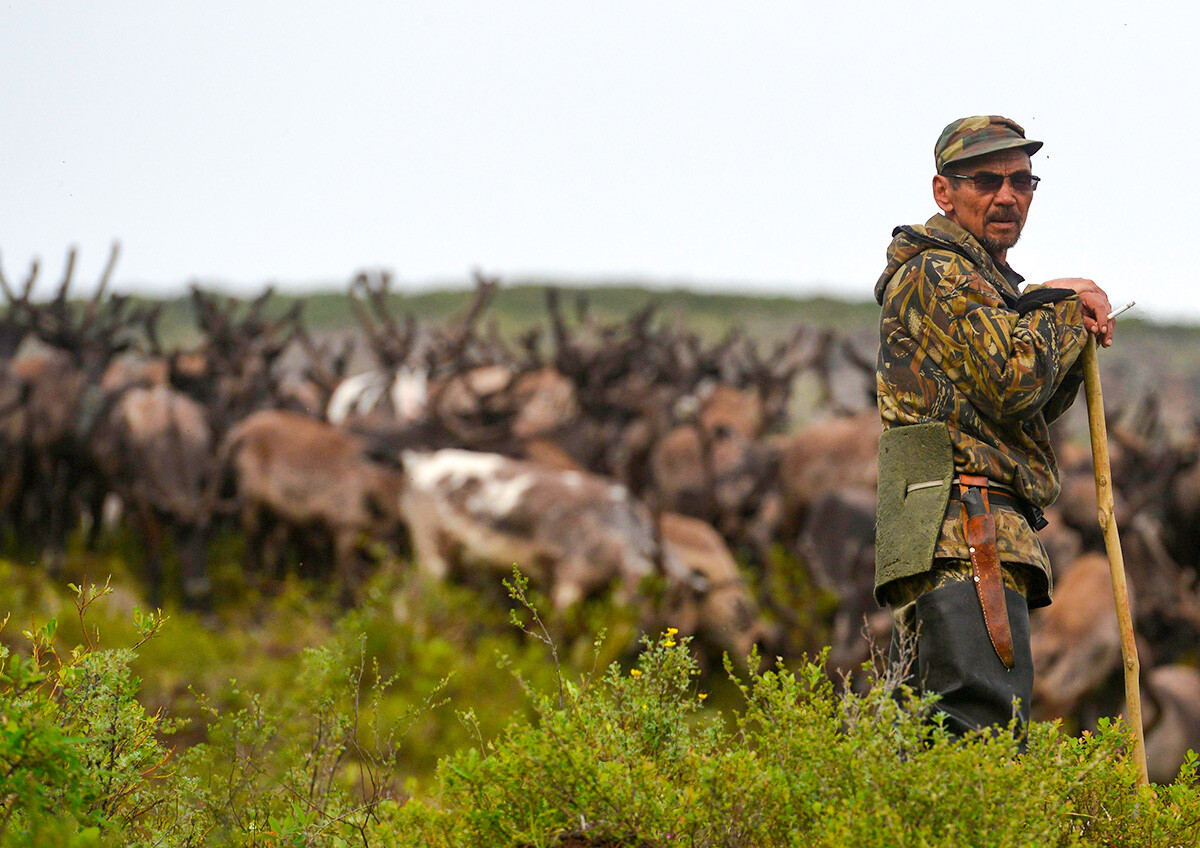
The Even are relatives of the Evenks, living to the East, mainly in Yakutia and Chukotka (as well as in other regions of the Far East). There are just over 20,000 Evens in the world. In contrast to the Evenks, the Evens are more engaged in fishing and use reindeer more as transportation. Although reindeer herders also occur among them.
The Evens received their own alphabet thanks to Soviet scientists in the mid-1930s. Today, there are about 6,000-7,000 Even speakers.
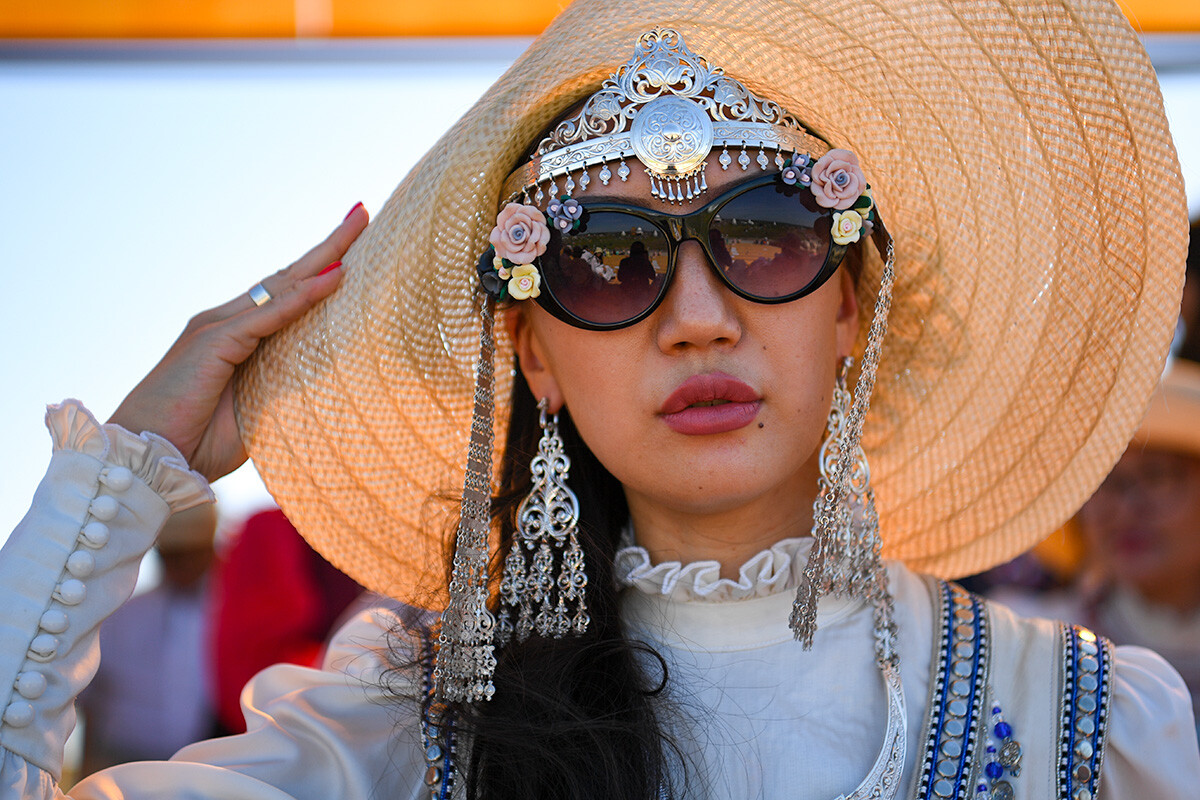
At the Yakut traditional summer holiday.
Alexander Kryazhev/SputnikThe most populous northern people are the Yakuts. They number about half a million and most of them live in the Republic of Sakha-Yakutia (Sakha is the self-name of the Yakuts). About 40% of Yakutia is above the Arctic Circle. Modern Yakuts are urban dwellers, who work in the most ordinary jobs. Nevertheless, you can also meet Yakut reindeer herders in the Arctic tundra.
(Read more about Yakuts here.)
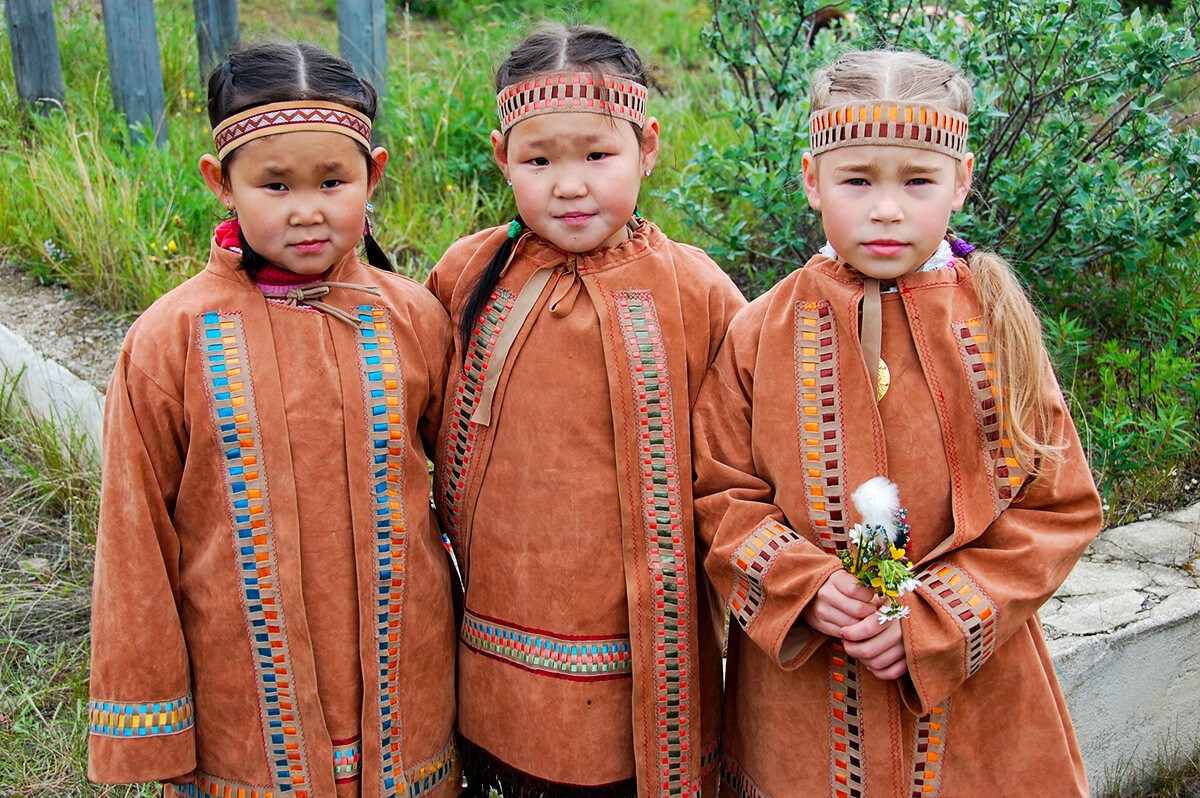
Several centuries ago, they were the largest people of Eastern Siberia, which itself was divided into different ethnic groups. Today, almost all Yukaghirs (roughly 1,500 people) live in the north of Yakutia and Chukotka, in the Kolyma River basin. The rest have assimilated with neighboring peoples. There are almost no speakers of the Yukaghir language left.
(Read more about them here.)
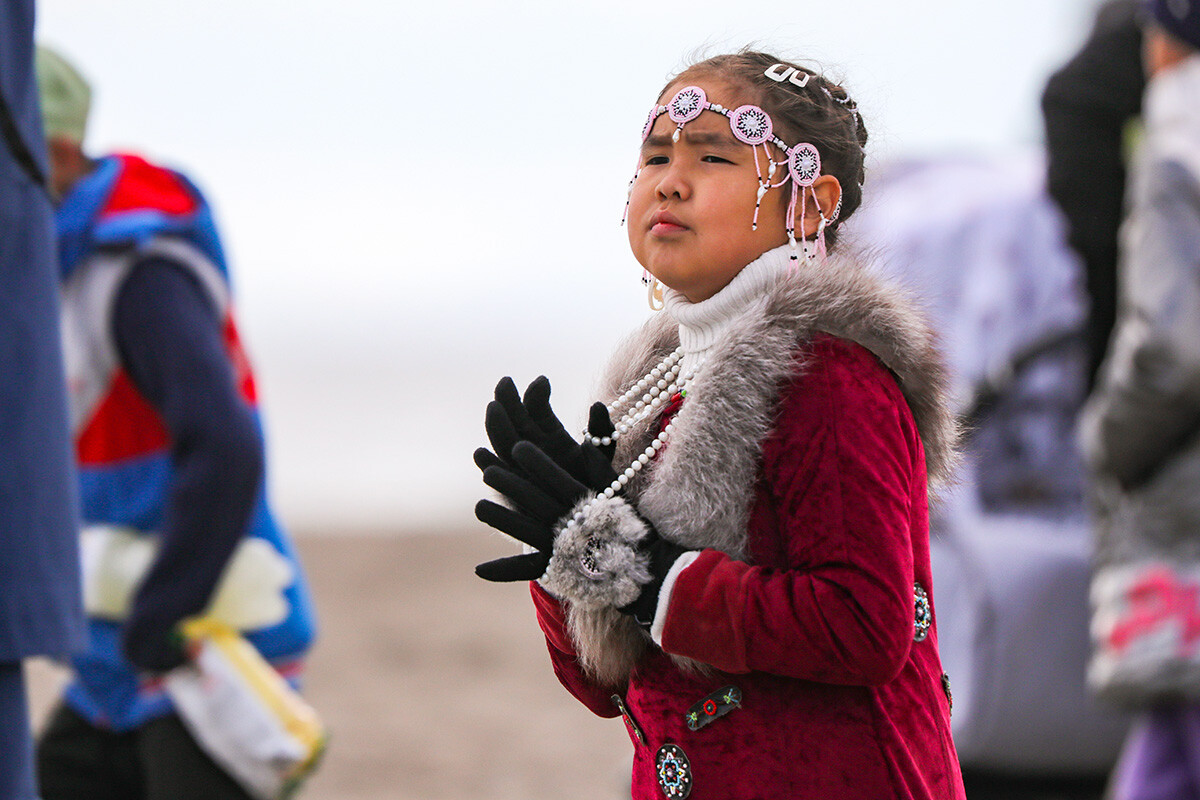
A kid from Lorino, the village of the Chukchi Peninsula.
Vyacheslav Viktorov/Roscongress/SputnikThere are about 16,000 of them in total and most of them live on the Chukchi Peninsula. Many Chukchi are still engaged in traditional trades: “tundra” dwellers are nomadic reindeer herders and “coastal” dwellers are sea hunters. They hunt walrus, seals and whales. At the same time, Chukchi do not live in isolation from the outside world; they use all modern gadgets, even in their yarangs (tents).
(Read more about the life of modern Chukchi here.)
Dear readers,
Our website and social media accounts are under threat of being restricted or banned, due to the current circumstances. So, to keep up with our latest content, simply do the following:
If using any of Russia Beyond's content, partly or in full, always provide an active hyperlink to the original material.
Subscribe
to our newsletter!
Get the week's best stories straight to your inbox